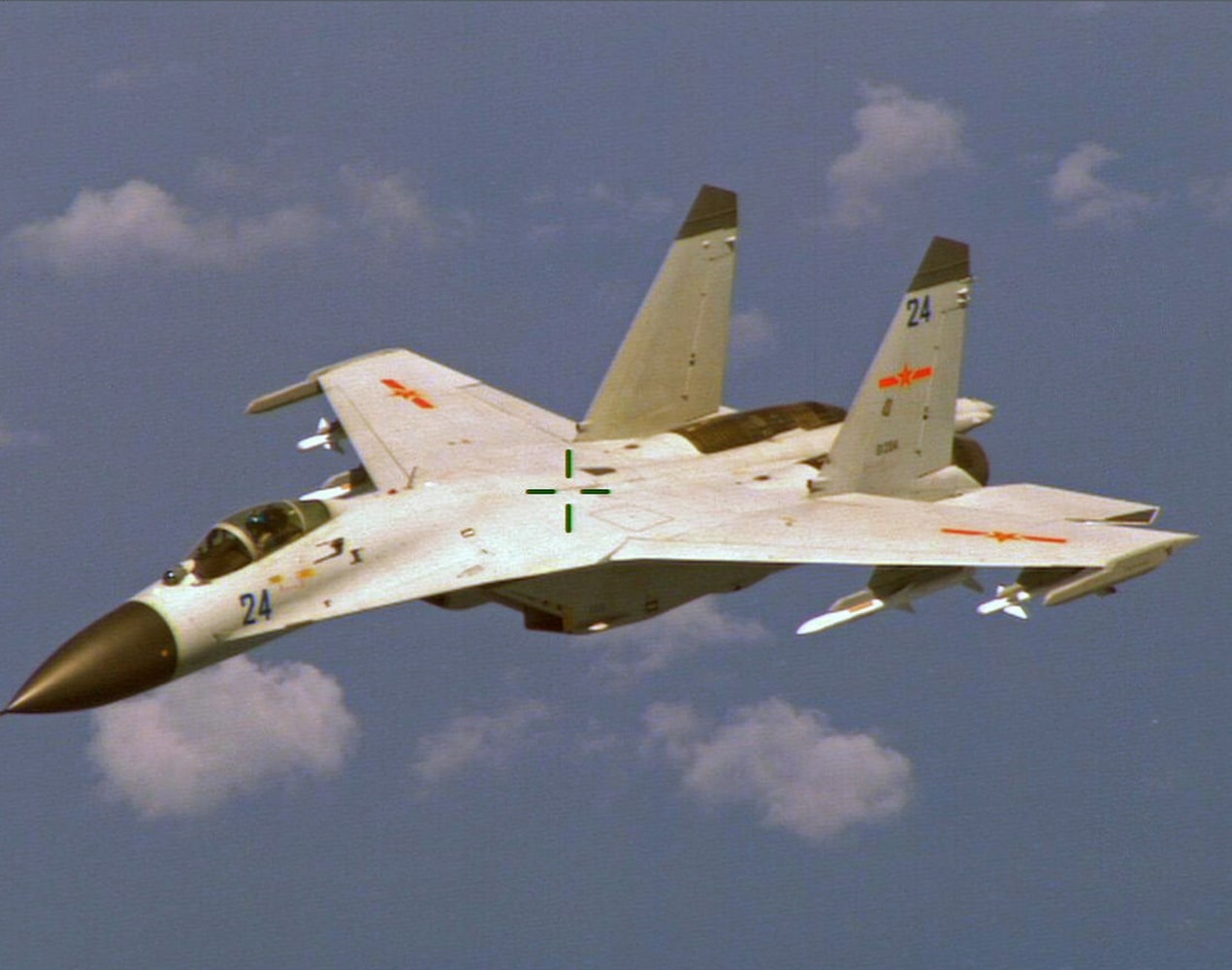Two Chinese fighter jets carried out an "unsafe" intercept of a U.S. military reconnaissance aircraft over the South China Sea, the Pentagon said on Wednesday, a further escalation of tensions in and around the contested waterway.
HONG KONG/WASHINGTON - Two Chinese fighter jets carried out an "unsafe" intercept of a U.S. military reconnaissance aircraft over the South China Sea, the Pentagon said on Wednesday, a further escalation of tensions in and around the contested waterway.
The incident took place in international airspace on Tuesday as the U.S. maritime patrol aircraft carried out "a routine U.S. patrol," a Pentagon statement said.
The incident comes a week after China scrambled fighter jets as a U.S. Navy ship sailed close to a disputed reef in the South China Sea.
Another Chinese intercept took place in 2014 when a Chinese fighter pilot few acrobatic manoeuvres around a U.S. spy plane.
The intercept is also days before President Barack Obama travels to parts of Asia from May 21-28, which will include a Group of Seven summit in Japan and his first trip to Vietnam.
China claims most of the South China Sea, through which US$5 trillion in ship-borne trade passes every year. The Philippines, Vietnam, Malaysia, Taiwan and Brunei have overlapping claims.
Washington has accused Beijing of militarising the South China Sea after creating artificial islands while Beijing, in turn, has criticized increased U.S. naval patrols and exercises in Asia.
The Pentagon statement said the Department of Defense was addressing the issue through military and diplomatic channels.
Chinese authorities have yet to comment in detail but a report in the Global Times said the Defence Ministry was looking into reports.
The paper, an influential tabloid published by the Communist Party's official People's Daily newspaper, said reports showed it was likely that a U.S. plane was operating near China.
The Pentagon has yet to release the precise location of the encounter.
SIGNAL OF DISPLEASURE?
In 2015, the United States and China announced agreements on a military hotline and rules of behaviour to govern air-to-air encounters called the Code for Unplanned Encounters at Sea (CUES).
"This is exactly the type of irresponsible and dangerous intercepts that the air-to-air annex to CUES is supposed to prevent," said Greg Poling, director of the Asia Maritime Transparency Initiative at Washington's Center for Strategic and International Studies think tank.
Poling said either some part of China's airforce "hadn't gotten the message", or it was meant as a signal of displeasure with recent U.S. freedom of navigation actions in the South China Sea.
"If the latter, it would be very disappointing to find China sacrificing the CUES annex for political gamesmanship."
Zhang Baohui, a security expert at Hong Kong’s Lingnan University, said he believed the encounter highlighted the limitation of CUES, and show that Chinese pilots would still fly close to U.S. surveillance planes if needed.
“Frankly, we’re always going to see these kinds of incidents as China will always put the priority on national security over something like CUES whenever it feels its interests are directly threatened,” he said.
While the precise location of the encounter is not yet known, regional military attaches and experts say the southern Chinese coast is a military area of increasing sensitivity for Beijing.
Its submarine bases on Hainan are home to an expanding fleet of nuclear-armed submarines and a big target for on-going Western surveillance operations.
The Guangdong coast is also believed to be home to some of China’s most advanced missiles, including the DF-21D anti-ship weapon.
The Pentagon last month called on China to reaffirm it has no plans to deploy military aircraft in the Spratly Islands after China used a military plane to evacuate sick workers from Fiery Cross Reef, where it has built a 3,000 metre (9,800 ft) runway.
In April 2001, an intercept of a U.S. spy plane by a Chinese fighter jet resulted in a collision that killed the Chinese pilot and forced the American plane to make an emergency landing at a base on China's Hainan island.
The 24 U.S. air crew members were held for 11 days until Washington apologised for the incident. That encounter soured U.S.-Chinese relations in the early days of President George W. Bush's first administration.
Last month, the Pentagon said that Russia had intercepted a U.S. Air Force aircraft over the Baltic Sea in an "unsafe and unprofessional" way.
(Additional reporting by David Brunnstrom in Washington and Michael Martina in Beijing; Editing by Sandra Maler and Lincoln Feast.)
- Reuters


No comments:
Post a Comment